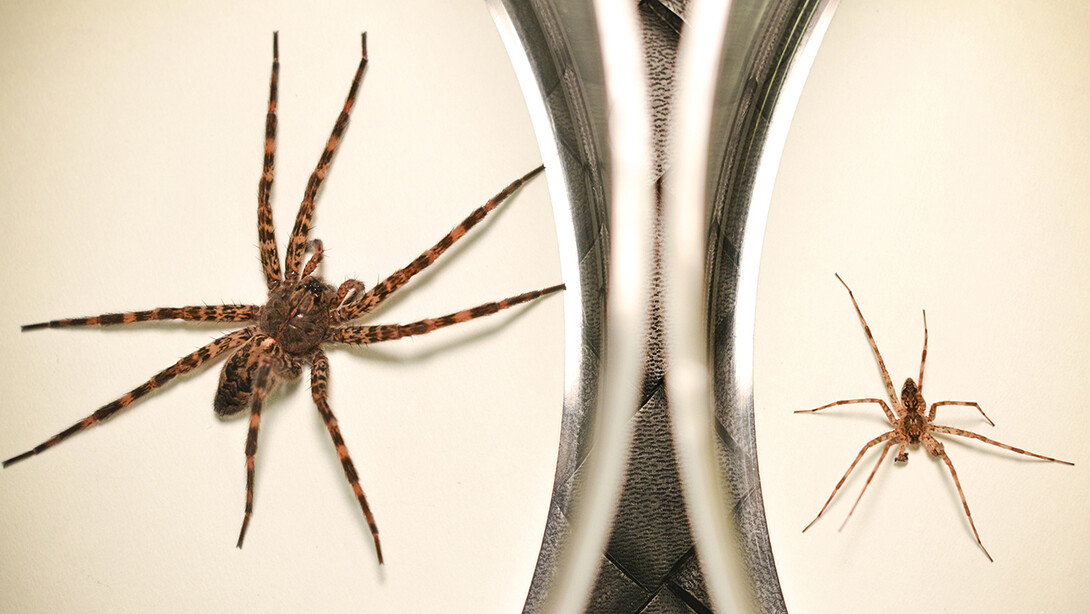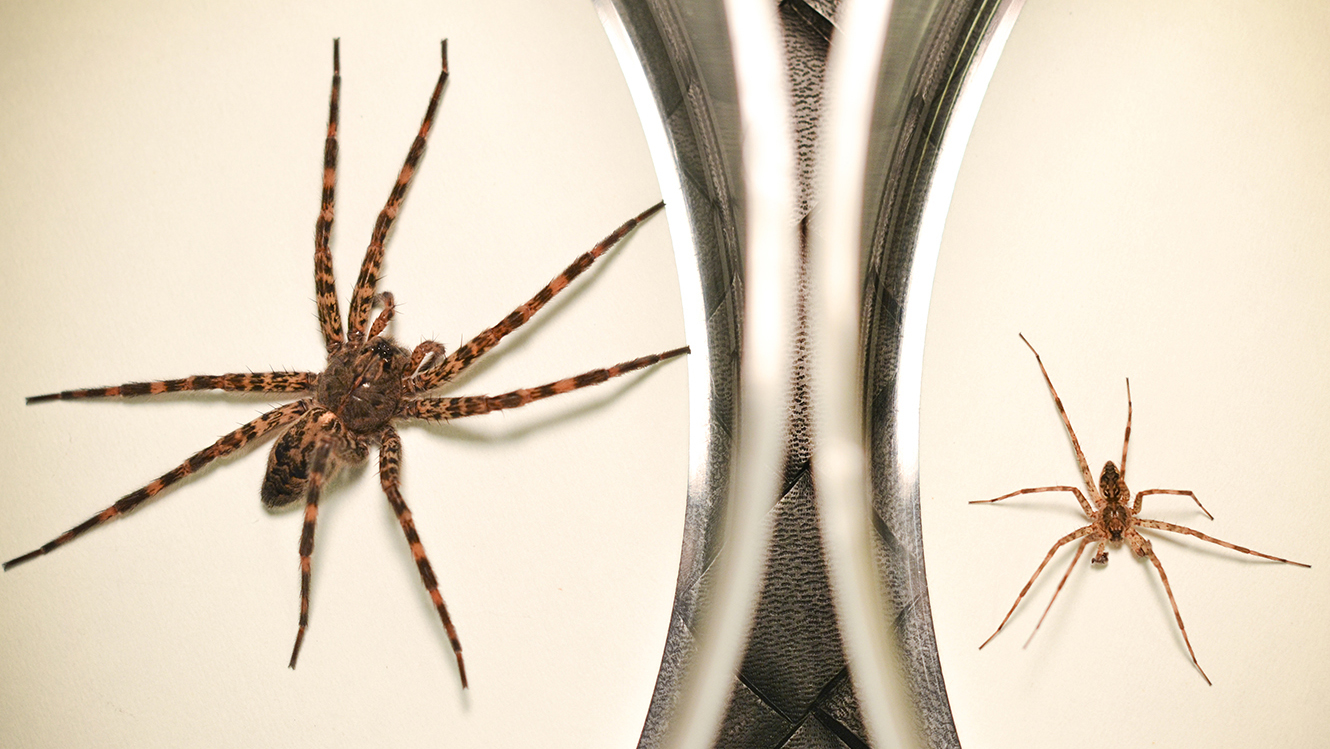
The male dark fishing spider is just dying to father some children – and this death wish probably evolved to benefit his offspring, according to new research from the University of Nebraska-Lincoln and Gonzaga University.
In 2013, Steven Schwartz and his colleagues reported that the male dark fishing spider begins to curl up and die immediately after mating with a female, which then devours him. Now the researchers have published a study showing that the male’s sacrifice appears to increase the number, size and survival odds of his future spiderlings.
Females that cannibalized their mates produced nearly twice as many spiderlings as females that were denied their post-sex dessert, the study reported. The spiderlings also grew nearly 20 percent larger, and survived about 50 percent longer, than those whose mothers did not eat their mates.
Schwartz also decided to test whether consuming a cricket, rather than the male spider, confers the same advantages. Though the crickets were the same size as the male spiders, the study found no evidence that cricket-snacking delivers any substantial boost to the females’ offspring.
“It’s only when a female eats the male that we see these benefits,” said Schwartz, a faculty member at Gonzaga who conducted the study while a doctoral student at Nebraska. “So there’s something unique, something special, about the males.
“There might be a nutrient, or maybe a cocktail of nutrients, that is somehow concentrated in the males’ bodies. We don’t know what that is, but there is something going on there.”
After a male transfers his sperm to a female through a reproductive organ known as a pedipalp, a bulb inside the pedipalp suddenly “goes off like an airbag,” Schwartz said. The bulb remains inflated while the male’s body curls up, and his heart would stop beating within hours if the female were not there to dine on him first.
Though the extreme behavior seems especially counterintuitive given that females will mate with multiple males, Schwartz and his colleagues have proposed several explanations for it. Because the female dark fishing spider is about 90 percent larger than the male, any attempts to resist cannibalization would probably – and probably did – prove futile. With no reasonable alternative, males may simply be “making the best of a bad situation” by offering themselves up as an offspring-enriching meal, Schwartz said.
The behavior could also have evolved in response to first-male sperm precedence – the fact that the first male to mate with a female gets to fertilize far more of her eggs than do the males that follow. Though research has yet to confirm first-male precedence in the dark fishing spider, Schwartz said that males seem to prefer virgin mates. And if the species’ reproduction does adhere to first-male precedence, the value of surviving to mate with other females would diminish in short order.
“If you’re a male and can find a virgin female, that’s the best scenario, because you’re not in sperm-competition with other males,” Schwartz said. “But say a week goes by. (Even if) you survive and find another female and go on to mate with her, the probability of that next female being previously mated goes higher and higher as (time passes). So even though it’s likely that (surviving) males would encounter multiple females, it’s less likely that they’d be virgin.”
Schwartz and co-authors Eileen Hebets and William Wagner Jr., professors of biological sciences at the University of Nebraska-Lincoln, said the new study represents one of just a few to investigate self-sacrificing behavior. Most of the others, which examined mainly spiders and mantids, found that cannibalism had little to no effect on offspring.
“Most of our knowledge about self-sacrifice in animals comes from a very small number of systems in a limited number of taxa,” Hebets said. “These few systems have been incredibly influential in guiding our thoughts regarding the evolutionary patterns of extreme mating behavior. Our particular results, however, don’t necessarily fit the typical pattern, suggesting that the field might need more data and a greater diversity of examples before drawing conclusions about the evolutionary patterns of terminal investment strategies.”
The researchers’ study appeared in the journal Current Biology and was funded in part by the National Science Foundation.

Share
News Release Contact(s)
Related Links
Tags
High Resolution Photos

HIGH RESOLUTION PHOTOS

HIGH RESOLUTION PHOTOS








